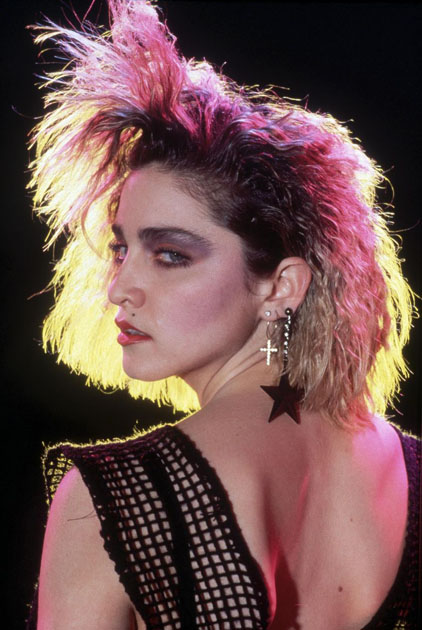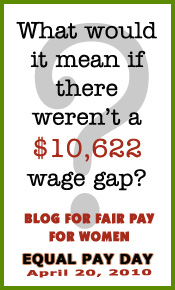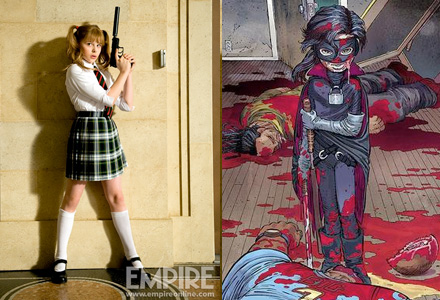
This is my entry for the massive distributed storytelling effort My Super First Day:
"Remember that day, one year ago, when you woke up and discovered you had a superpower? We do, too! This is an exercise in massively collaborative storytelling. Contributors from the farthest-flung reaches of the interwebs have come together to tell us about that wonderful (or horrible!) day when their lives suddenly became supercharged."Please forgive me this break from our regularly scheduled punditry and try to get through...
Tacky Clothes make even Tackier Bedfellows…
Caitlin Burns’ Super First Day
It was a dark and stormy… completely sunny 88 degree afternoon in Phoenix with literally no clouds and I was lying on my back on a plasticized picnic table in my high school’s parking lot. My friend, Therese, was splayed out atop an inflatable alligator that was shimmering atop the burning hot concrete in its own ineffable manner, its plastic smile creased by the weight of her physics textbook. Jim was attempting a handstand on the nearby grass, his juvenile gymnastic prowess diminished by his adolescent chunkiness.
Therese was trying to explain to me precisely why physics would be applicable to me in my daily life, other than getting into college and moving about in space are concerned. Of course, I assumed that the calculus involved was something that would make sense eventually, probably on my deathbed I would care more about functions and infinite sums but at that point I simply could not be bothered and the standard issue Arizona heat was not helping.
Jim spotted a maroon Subaru turning the corner into the parking lot, which was a full block and literally a quarter mile from where we were lazing about. It was 4:45 and Jim’s mom was here to pick him up along with Therese. They lived in the area closer to Camelback Mountain, the dromedary-like fixture that poked above the smog layer and loomed like a cigarette warning above my childhood.
I bid my friends farewell and unlocked the door of my ’89 Honda Civic stepping aside as I opened the door to the backseat so that the blast of heat wouldn’t hit me in the face. I proceeded to shove in the inflatable Alligator, threw my book bag on the passenger seat and, pulling my sleeves over my hands, gingerly gripped the burning hot wheel and turned the key. Nothing happened, I checked the break, Nothing Happened, I got out and checked the radiator fluid, nothing strange but also, the car wouldn’t turn on. I sighed, grabbed by bag, locked the car and rummaged through it for a caramel apple pop setting off across the parking lot and across the running track to the entrance to the labyrinthine alleys that would take me home to where my more mechanically inclined father would be waiting.
I lived three-quarters of a mile in the other direction from the mountain, in a comfortable Middle-Class buffer area that insulated the ritzy Arcadia Suburb from the lower-class area across 40th, demarcated as such things often are, by a decrepit house with aluminum foil over the windows that was occasionally busted as a Meth Lab. Ironically, that street may has well have been the Pacific Ocean for all it affected the neighborhood next to it and I had no concerns walking home.
As I meandered down the rows of Oleanders and more quickly past one particular yard that usually contained a barking Rottweiler, Shirley Manson vamping out of my Discman, I heard a loud whistle. I stopped, turned around, and there was no one there. I assumed that it was someone in a back yard, despite the fact that nearly no one other than teenagers walking around in alleys ever ventured into their own back yards at this time of day.
I started walking again and about 10 feet down the alley I heard the wolf whistle again. This time I pulled the Carmel Apple Pop from my mouth and, yelled,
“Hello?”Only after I’d yelled did I realize how much a horror-movie cliché that is, and feeling like an ass I turned back towards my goal, rolled back my shoulders and stepped forward.
No answer but the cicadas and the chattering of a Blue Jay on a power line above me.
“Hey Baby, TwoooT!” loudly squawked the bird above my head.I nearly choked on my lolly pop, instead it caught on my tongue stud and in my efforts to disentangle myself I managed to get caught in my headphone wires, get my arms stuck in the strap of my book bag and, long story short, ended up on my butt in the dirt as the Jay laughed uproariously at my expense.
“Nice job,” the feathered jerk mocked– if birds had tear ducts he would be weeping with laughter at this point. “I don’t know if you’ve noticed but your shoe is untied too, also your shoes are ungodly ugly.”Well, that was it, I could talk to birds… you would be surprised how many of them are assholes.
“I thought birds liked shiny things?” I said wrestling with the lace of my aqua, glittery high-heeled Sketchers.
“Even people who like shiny things have SOME standards,” the Jay retorted, at which point he opened his wings and flew away.
















